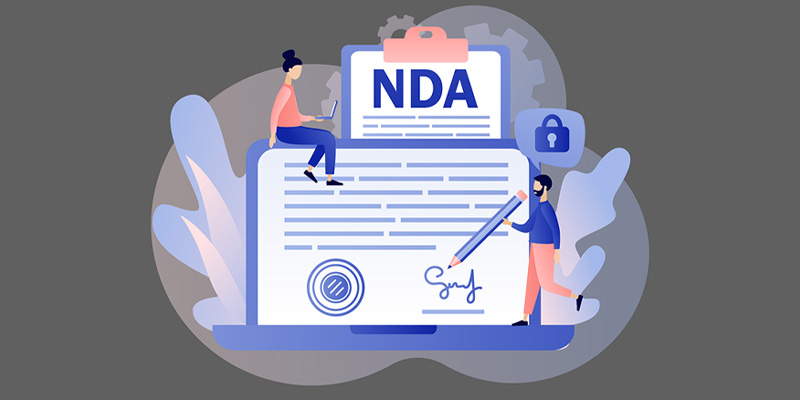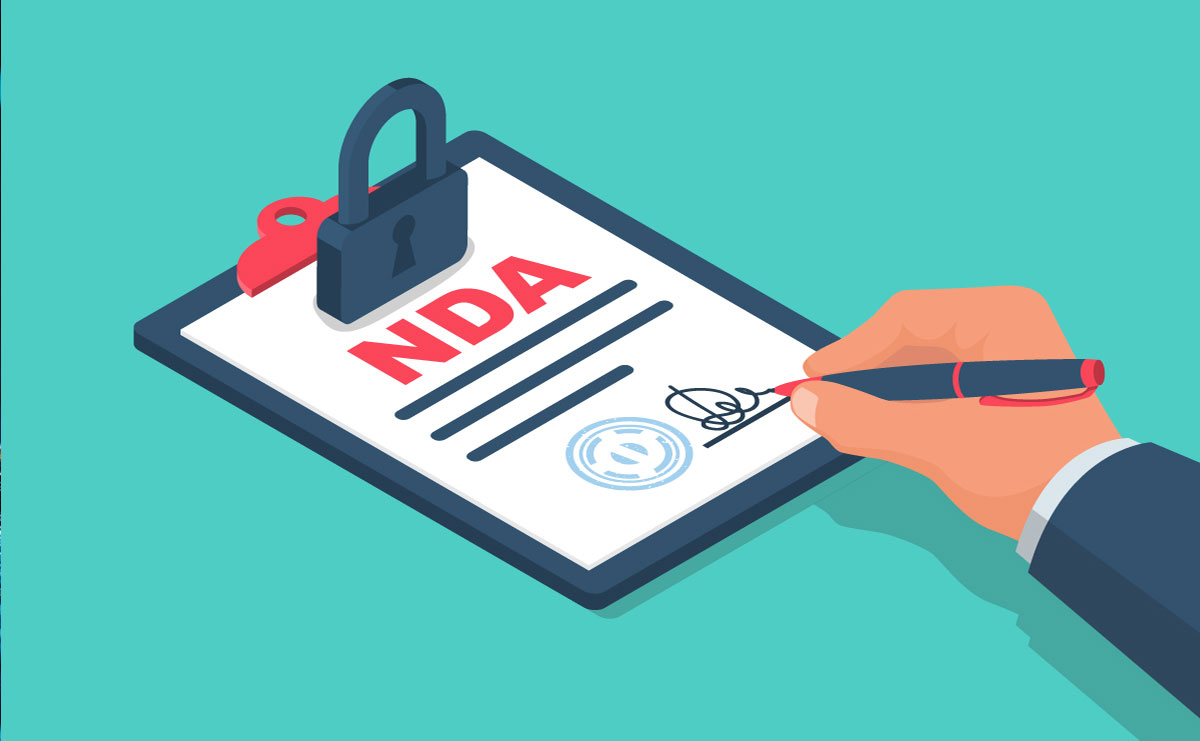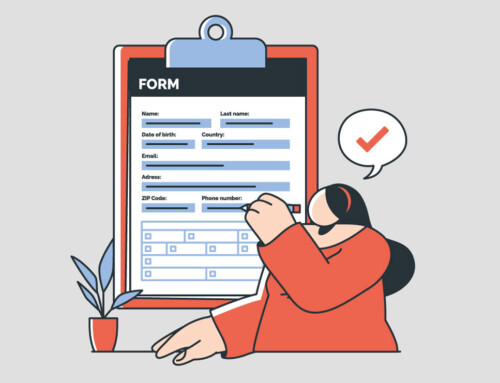Contents
The Basics of NDA: What Does a Non-Disclosure Agreement Cover?
An NDA, or Non-Disclosure Agreement, is a legal contract that helps keep shared information private between two or more parties. Essentially, it lays out what needs to stay confidential and what the involved parties are allowed (or not allowed) to do with that information. You will often see NDAs used in business deals, partnerships, or even when hiring employees—basically, in any situation where sensitive information like business strategies, trade secrets, or intellectual property is at stake.
By signing a Non-Disclosure Agreement, everyone agrees to keep certain details under wraps and to follow specific rules to prevent unauthorized sharing or misuse of that information. Whether it is a one-way agreement where only one side is disclosing sensitive information or a mutual agreement where both sides are sharing confidential details, the goal is the same: protect the information from getting into the wrong hands. The NDA requirements include clauses about not only the non-disclosure of information but also the proper handling and storage of confidential materials. The Non-Disclosure Agreement outlined strict guidelines on how proprietary information must be handled and protected throughout the project. Failure to comply with the Non-Disclosure Agreement requirements could result in legal action and significant financial penalties. Also, breaching the NDA legal terms could result in severe financial penalties and potential lawsuits.
Why Does an NDA Matter?
An NDA matters for several vital reasons, particularly when protecting sensitive information and fostering trust between parties. Here is why NDAs are crucial:
Protection of Confidential Information
Before the contract negotiations began, an NDA was put in place to prevent the disclosure of confidential information shared between the parties. Non-Disclosure Agreements safeguard valuable or proprietary information such as trade secrets, business strategies, client lists, or product designs. By signing an Non-Disclosure Agreement, the receiving party agrees not to disclose or use this information outside the agreement’s defined boundaries.
Maintaining Competitive Advantage
Businesses often depend on keeping certain information confidential to maintain a competitive edge. Non-Disclosure Agreements help prevent competitors from gaining access to important data that could diminish this advantage.
Fostering Trust in Business Relationships
NDAs create a foundation of trust between parties, enabling open discussions without fear of confidential details being leaked. This is especially important in partnerships, negotiations, or potential mergers, where the free flow of information is necessary for decision-making.
Legal Recourse for Breach
An NDA provides a legal framework to take action if confidential information is misused or leaked. The agreement typically outlines remedies or penalties for breaches, giving the disclosing party legal recourse to seek damages.
Encourages Innovation and Collaboration
NDAs allow businesses and individuals to collaborate on projects without the risk of exposing sensitive information. This promotes innovation, as parties can freely share ideas, knowing they are protected by law.
Employee and Contractor Confidentiality
Employers often require employees or contractors to sign NDAs to prevent them from sharing proprietary information with competitors. This helps protect internal business operations and intellectual property.
Preserving Client and Business Relationships
Client confidentiality is paramount in fields like law, finance, or healthcare. NDAs help ensure that sensitive client data is not disclosed to unauthorized parties, preserving the trust and integrity of the business relationship.
Setting Clear Expectations
NDAs establish clear boundaries about what information can be shared and with whom. This avoids misunderstandings and ensures all parties are aligned on what constitutes confidential material.
What Are Different Types of NDAs?
Non-disclosure agreements are legal contracts that protect sensitive information shared between parties. They generally fall into two categories: unilateral and mutual.
A unilateral NDA is used when only one party discloses confidential information to another. In this case, the receiving party agrees not to share or misuse the information provided. This type of NDA is commonly used when a business or individual needs to protect proprietary information shared with employees, contractors, or potential investors. The emphasis is on safeguarding the interests of the disclosing party, ensuring that the recipient understands their obligation to maintain confidentiality.
On the other hand, a mutual NDA involves both parties exchanging confidential information, with each agreeing to protect the other’s data. This type of agreement is common in partnerships, joint ventures, and negotiations where both parties have proprietary information to share. It ensures that both parties are equally bound to confidentiality, fostering a sense of trust and security when sensitive information flows in both directions.
The key difference between the two types of NDAs lies in the nature of the information exchange. In a unilateral Non-Disclosure Agreement, only one party discloses information, while the other agrees to protect it. In a mutual Non-Disclosure Agreement, both parties disclose information and commit to safeguarding each other’s interests. The decision to use one over the other typically depends on the type of relationship and the nature of the information being exchanged.

What Are the Key Elements of an NDA?
An NDA is a legal contract that protects sensitive information from being disclosed to unauthorized parties. Critical elements of an Non-Disclosure Agreement typically include:
Definition of Confidential Information: The NDA should clearly define “confidential information,” specifying the types of data, documents, and communications covered.
Parties Involved: Identify the parties bound by the NDA, including the disclosing party (the one sharing information) and the receiving party (the one receiving information).
Obligations of the Receiving Party: The NDA must specify that the receiving party must keep the information confidential and not disclose it to any third parties without consent.
Permitted Use of Information: The agreement should state the specific purposes for which the receiving party can use the confidential information, limiting its use to those outlined in the contract.
Exclusions from Confidential Information: It is essential to define exceptions, such as publicly known information, independently developed without access to confidential data, or disclosed by a third party without a breach.
Duration of Confidentiality: NDAs should specify the time frame during which the confidentiality obligations apply, which could extend beyond the termination of the relationship.
Consequences of Breach: The agreement should outline the legal consequences or remedies, such as monetary damages or injunctive relief, in case the receiving party violates the NDA.
Return or Destruction of Information: Include a clause specifying what should happen to the confidential information at the end of the agreement, typically requiring its return or destruction.
Governing Law and Jurisdiction: The NDA should specify which jurisdiction’s laws will govern the agreement and where legal disputes will be resolved.
These elements ensure that the confidential information shared between parties remains protected and legally enforceable.
What Are Restrictions of an NDA?
Non-Disclosure Agreements (NDAs) include various restrictions to protect confidential information and prevent it from being disclosed or misused. The specific restrictions in an Non-Disclosure Agreement can vary based on the agreement’s terms, but here are the most common ones:
Scope of Confidential Information
Non-Disclosure Agreements typically define “confidential information,” including trade secrets, proprietary data, business strategies, client lists, financial records, and other sensitive information. The recipient is restricted from disclosing or using this information beyond the purposes defined in the agreement.
Limitations on Use
The recipient of the information is generally restricted from using confidential information for anything other than the agreed-upon purpose (e.g., evaluating a business deal or working on a specific project).
Non-Disclosure
The recipient is prohibited from sharing confidential information with third parties. Often, Non-Disclosure Agreements specify exceptions to this, such as disclosures required by law or to individuals who have a legitimate need to know (e.g., employees or advisors).
Time Limitations
Non-Disclosure Agreements often specify a period during which the recipient must maintain the confidentiality of the information. This period can vary but typically ranges from 2 to 5 years, although some agreements may have perpetual confidentiality obligations for specific information.
Exclusions
Non-Disclosure Agreements often include exclusions for information already publicly known at the time of disclosure, independently developed by the recipient without using the confidential information, and obtained legally from a third party to whom an NDA did not bind.
Geographic Limitations
Some Non-Disclosure Agreements may specify geographic restrictions, limiting where the information can be shared or used. This can be particularly important for businesses operating internationally.
Return or Destruction of Information
Many NDAs require that the recipient return or destroy all confidential information provided upon termination of the agreement or completion of the project.
No Public Statements
The agreement might prohibit the recipient from making any public statements or announcements about the existence or content of the Non-Disclosure Agreement or the relationship between the parties.
These restrictions protect the disclosing party’s sensitive information while allowing for necessary business collaborations.
What Are the Consequences of Breaching an NDA?
Breaching the NDA requirements could severely damage the company’s reputation and lead to legal disputes. The severity of the consequences often depends on the terms of the agreement, the nature of the breach, and the damages incurred by the disclosing party. Here are the most common consequences of violating an NDA:
Monetary Damages
- Compensatory Damages: The breaching party may be required to pay for any financial losses the disclosing party suffered due to the breach. These could include lost profits, business opportunities, or damage to the disclosing party’s reputation.
- Liquidated Damages: Some NDAs include clauses specifying a predetermined amount of money to be paid if the agreement is breached. This amount is usually agreed upon at the time the Non-Disclosure Agreement is signed.
- Punitive Damages: In cases of egregious breaches, a court may award punitive damages to punish the breaching party and deter future misconduct.
Injunctions and Cease-and-Desist Orders
A court may issue an injunction to prevent the breaching party from continuing to disclose or use the confidential information. This legal order immediately halts any further dissemination or use of the protected information. A cease-and-desist order may also be issued, compelling the breaching party to stop the offending actions or communications.
Loss of Business or Employment
If an NDA is breached within the context of employment, the breaching party may face termination or suspension. For businesses, breaching a Non-Disclosure Agreement can lead to the loss of key contracts, clients, or business opportunities due to a loss of trust.
Reputation Damage
A breach of confidentiality can severely damage the breaching party’s reputation. This is especially important for professionals, contractors, or businesses that rely on trust and confidentiality to maintain relationships with clients and partners.
Legal Fees and Costs
If litigation is required, the breaching party may be required to cover the legal costs and attorney fees of the disclosing party. Many NDAs include clauses stipulating that the losing party must pay for the prevailing party’s legal expenses.
Equitable Relief
Courts may order specific performance, requiring the breaching party to fulfill their obligations under the NDA. This could involve returning or destroying confidential information that was improperly used or disclosed.
Criminal Charges (in some cases)
In cases where the breach involves theft of trade secrets or other proprietary information, criminal charges may be brought under laws like the Economic Espionage Act in the U.S. Violations of such laws can result in fines and even imprisonment.
Termination of the Agreement or Contract
A breach may result in terminating any broader contracts or business relationships contingent on maintaining confidentiality. This could lead to the loss of ongoing or future work for the breaching party.
Exclusion from Future Business Opportunities
Businesses or professionals found to have violated an NDA may be blacklisted from future collaborations, limiting their access to new partnerships or projects within their industry.
Disgorgement of Profits
If the breaching party gained any profits or benefits from the breach, they may be required to give up those profits to the disclosing party as part of the legal remedy.
Loss of Intellectual Property Rights
In some cases, breaching an NDA may result in the loss of intellectual property rights, particularly if the breach leads to the public disclosure of trade secrets, making them no longer protectable under intellectual property laws.
The specific consequences depend on the language of the NDA and the applicable laws governing the agreement. Courts will typically assess the harm caused by the breach and tailor remedies accordingly.
How to Enforce NDA?
Enforcing a Non-Disclosure Agreement hinges on the meticulous identification of a violation. This involves a thorough review of the Non-Disclosure Agreement to determine if the breach has indeed occurred. The key is to ascertain whether the confidential information has been misused or disclosed without authorization. It is imperative to ensure that the information in question falls within the protective scope of the NDA, as many agreements contain exclusions or time limitations that can impact enforcement. The Non-Disclosure Agreement’s legal enforceability across different jurisdictions was a key concern during the international contract negotiations.
Once a violation is identified, the next step is to gather evidence of the breach. This could include emails, documents, or other records that prove the confidential information was disclosed or improperly used. Along with the evidence, assessing the breach’s impact, including any financial losses or reputational harm, is essential, which will be critical when seeking remedies. After confirming the breach, the most common initial action is to send a cease-and-desist letter to the breaching party. This formal notice should state the breach, demand an immediate stop to the disclosure or misuse of the information, and outline potential legal consequences if the offending party fails to comply. Often, this can resolve the issue without escalating it to litigation.
If the cease-and-desist letter does not result in compliance, the next step may be exploring alternative dispute resolution (ADR) options, such as arbitration or mediation. Many NDAs include clauses that require ADR before pursuing litigation, offering a faster and more cost-effective resolution. In some cases, negotiating a settlement directly with the breaching party may be an effective way to resolve the issue and avoid court proceedings.
However, if these methods fail, filing a lawsuit may be necessary. Consulting an attorney specializing in contract law is crucial at this stage, as they can help build a strong case based on the evidence and terms of the Non-Disclosure Agreement. Legal remedies can include seeking an injunction or temporary restraining order (TRO) to stop further disclosure or misuse of the information. Additionally, you can pursue compensatory damages for financial losses or even punitive damages in more severe cases. If the Non-Disclosure Agreement includes a liquidated damages clause, the breaching party may be required to pay a specified sum.
In some situations, you can also seek specific performance, where the court orders the breaching party to fulfill their obligations under the Non-Disclosure Agreement, such as returning confidential information. After a successful lawsuit or settlement, monitoring the breaching party for compliance is essential to ensure they adhere to the court’s orders and stop further misuse.
Enforcing an NDA in an international context adds another layer of complexity, especially if the breach occurs in a different jurisdiction. In such cases, working with legal experts familiar with international business law is crucial, as enforcement might depend on whether the countries involved have treaties for recognizing and enforcing foreign judgments, such as the Hague Convention.
When enforcing an NDA, time is of the essence. Prompt action is key, as it helps minimize potential damage and strengthens your legal position. Ensure the Non-Disclosure Agreement includes clear governing law and jurisdiction clauses to simplify enforcement. Litigation can be costly, so it is important to weigh the potential legal expenses against the benefits of taking action. Finally, consider the broader implications, including potential effects on your reputation or future business relationships, when enforcing a Non-Disclosure Agreement.
What Are NDA Laws?
NDA laws govern the enforceability and limitations of NDAs across various jurisdictions, with principles rooted mainly in contract law. A Non-Disclosure Agreement, like any other contract, must meet basic legal requirements such as offer and acceptance, consideration, mutual intent, and capacity to be enforceable. In the event of a breach, it is treated as a breach of contract, subject to legal remedies such as damages or injunctions.
In many jurisdictions, NDAs serve as a robust shield for trade secrets, safeguarded by laws such as the Uniform Trade Secrets Act (UTSA) in the U.S. and the Trade Secrets Directive in the EU. These laws protect valuable business information that derives its value from being kept secret, and NDAs serve as concrete evidence that the company took reasonable steps to protect these secrets. However, to be enforceable, NDAs must be reasonable in scope, time, and geography. Courts tend to reject overly broad NDAs that attempt to protect non-confidential information or restrict its use indefinitely, especially in cases where the information is not a trade secret.
NDAs are also subject to limitations based on public policy concerns. For example, NDAs cannot prevent whistleblowing or reporting illegal activities. Laws like the Sarbanes-Oxley Act and Dodd-Frank Act in the U.S. protect employees who disclose wrongdoing, even if they have signed an NDA. Similarly, NDAs cannot unreasonably restrict employee mobility by preventing them from using general knowledge and skills learned during employment. In some regions, such as California, non-compete clauses in NDAs are generally unenforceable, though trade secrets remain protected.
Jurisdiction-specific laws further influence Non-Disclosure Agreement enforcement. In the U.S., both federal and state courts typically uphold NDAs, particularly when they are reasonable. The Defend Trade Secrets Act (DTSA) provides a federal cause of action for trade secret misappropriation, and NDAs prove that reasonable steps were taken to protect those secrets. In the European Union, NDAs are enforced under national contract laws, while the EU Trade Secrets Directive harmonizes trade secret protection across member states. The UK follows similar standards post-Brexit under the Trade Secrets (Enforcement, etc.) Regulations 2018, Canada and Australia, have their respective frameworks that emphasize the reasonableness of Non-Disclosure Agreements.
In employment contexts, NDAs often include non-compete or non-solicitation clauses, which must be narrowly tailored to be enforceable. Many jurisdictions place heavy restrictions on these clauses. For instance, while NDAs may protect trade secrets, overly restrictive non-compete clauses may be struck down if they unduly limit employees’ ability to work in their field. Non-compete clauses are particularly scrutinized in places like California, where such clauses are generally unenforceable, except in specific circumstances.
NDAs play a pivotal role in mergers and acquisitions (M&A), where companies exchange sensitive business information during negotiations and due diligence. In these cases, Non-Disclosure Agreements act as a safety net, ensuring that if the transaction does not proceed, the disclosed information remains protected and cannot be used by competitors. NDAs also frequently appear in cross-border M&A transactions, where it is essential to ensure the agreement complies with relevant laws in all applicable jurisdictions.
When enforcing an NDA globally, legal challenges arise due to differences in jurisdictional laws. It is crucial to include a governing law clause that specifies which country’s laws will apply in case of a dispute. This proactive step ensures that if a breach occurs in another country, the enforcement of a domestic court’s judgment may depend on whether the other country recognizes foreign judgments. International treaties, such as the Hague Convention, can assist with cross-border enforcement of judgments.
What Are the Disadvantages of an NDA?
While NDAs help protect sensitive information, they have potential downsides, especially if they must be carefully designed and managed. Disadvantages of Non-Disclosure Agreements include:
Enforcement Costs: While an NDA gives legal protection, enforcing it can be expensive and time-consuming. Legal fees and court processes can quickly add up, mainly if the violation occurs across jurisdictions or involves multiple parties.
Challenges in Proving a Breach: Even if a party breaches the NDA, it can be difficult to prove the violation. If the information is shared verbally or indirectly, gathering concrete evidence may become complicated.
Stifles Collaboration: Strict NDAs can create a barrier to collaboration, making parties feel restricted in communicating or sharing ideas. This can be especially problematic in industries that rely on creativity or open dialogue.
May Cause Distrust: Requiring an NDA at the start of a relationship can sometimes create tension or distrust, particularly if the other party feels the agreement is overly restrictive or unnecessary.
Vague or Overly Broad Terms: The NDA needs to be clearer about what constitutes confidential information, or disputes may arise later. Overly broad terms can lead to confusion or even legal challenges about whether the NDA was violated.
Limits Public Disclosure: Sometimes NDAs restrict the ability to disclose positive achievements or information that could otherwise benefit a business, such as partnerships or product launches.
Be cautious of the potential for Legal Complications: Poorly drafted NDAs may not be enforceable in court. If the agreement is too vague, too restrictive, or does not meet legal standards, it could be rendered invalid. This underscores the importance of a well-drafted Non-Disclosure Agreement.
Unintended Constraints on Employees: Non-Disclosure Agreements may prevent employees from discussing work experiences with future employers or sharing certain skills, which could limit their career opportunities or create friction with new companies. This aspect of NDAs should be considered with empathy for the potential impact on individuals.
Final Thoughts
Non-Disclosure Agreements (NDAs) are essential tools for protecting sensitive information and building trust between parties. Whether you are sharing trade secrets, business strategies, or other proprietary details, a Non-Disclosure Agreement helps ensure that this information stays private and is handled responsibly. They provide a clear framework for what can and cannot be done with the shared information, giving businesses peace of mind during partnerships, negotiations, or collaborations.
That said, NDAs need to be well-drafted and balanced. It is important to understand exactly what you are agreeing to before signing. The scope, obligations, and restrictions should all be clear and fair, protecting both parties without overcomplicating the relationship or stifling collaboration.
While Non-Disclosure Agreements are powerful in protecting your business, they can come with challenges, such as the cost of enforcement or proving a breach. That is why it is always a good idea to get legal advice to ensure the agreement works for you. In the end, NDAs are about fostering secure and open business relationships, allowing everyone to work together with confidence that their information is safe.
Frequently Asked Questions
Is NDA legally binding?
Yes, a Non-Disclosure Agreement is legally binding if it meets the necessary legal requirements of a contract. These include offer and acceptance, meaning both parties must agree to the terms and considerations, where there is an exchange of value, such as confidential information for services or business opportunities. Both parties must intend to form a legally binding agreement and possess the legal capacity to do so, meaning they are of legal age, mentally competent, and not coerced. The purpose of the Non-Disclosure Agreement must also be lawful, and it cannot be used to protect illegal activities or unreasonably restrict legal rights. Additionally, the Non-Disclosure Agreement must have a reasonable scope regarding time, geography, and subject matter. If these conditions are met, the Non-Disclosure Agreement is enforceable, and a breach may result in legal remedies such as damages or injunctions. However, the Non-Disclosure Agreement must also be clear and fair, as courts may not enforce overly broad or one-sided agreements.
What are the key considerations when signing an NDA form?
There are several key factors to remember when signing a Non-Disclosure Agreement form. First, ensure that you fully understand the scope of the agreement, including what constitutes confidential information and how it can be used. Pay attention to the duration of confidentiality obligations and ensure the time frame is reasonable. Be clear on your obligations and any potential restrictions, such as limitations on sharing or using the information. Check for exceptions to confidentiality, such as information that becomes publicly available or is already known to the receiving party. Review any legal remedies or penalties outlined for breach of the agreement and ensure that the terms are fair and balanced. This means that the consequences of breaching the Non-Disclosure Agreement should be proportionate to the severity of the breach. Confirm that the jurisdiction and governing law are appropriate for your situation. Seek legal advice before signing if any terms are unclear or seem overly broad. Lastly, ensure that both parties signing the Non-Disclosure Agreement have the legal authority to do so, as this impacts its enforceability.
Disclaimer: The content provided on this blog is for informational purposes only and does not constitute legal, financial, or professional advice.







